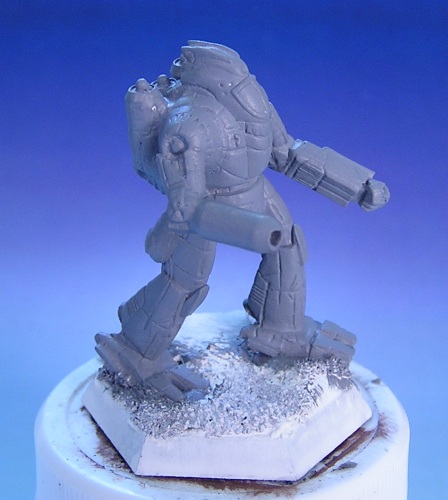
My paint job concept was to paint the glowing lines of a Blue Program on a shaded gray base. I decided to do the gray using 2 colors, VMA Dark Sea Gray and RMS Ghost White. I started with a base coat of the darker color, Dark Sea Gray. Since VMA paints are intended for airbrush use, they are very thin and sometimes require multiple coats when applied by hand. I used 2 hand-applied coats (if I make it past this round, I'll try to do an airbrush tutorial at some point; it wasn't the right tool for this job though).

I haven't talked much about washes before, though this mini gives me a good reason to. Really, there are 2 main reasons to use a wash: to apply shading, or to help reveal details. The latter method is called a "guide wash", because it helps show you the layout of the mini. There is a lot of small detail on this mini, so I chose to use a guide wash, but make it dark enough to help with the shading in the panel lines. The next pic shows my brush loading technique for a wash. Note that I use a fairly big brush (upper left). Before getting any paint on it, I soak it in a wash mixture of one part Future Floor Wax, four parts water (upper right). Next, I dab off the excess mix on a paper towel before loading it with paint (lower left). In this case, I used VMA Black paint, which is a very thin paint, but not as translucent as an ink. Finally, I get a dab of paint on the brush and apply it. Summary: unlike most artists, I don't mix the water, wax, and paint all together before applying this sort of wash.
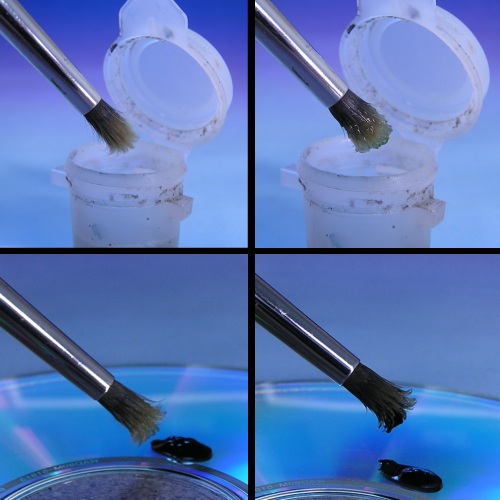
I apply the wash to each part of the mini separately, being sure to carefully control the proportions. With a water-loaded brush, it is easy to soak up any overdoses of the paint. After each part dries, I move onto the next until the whole mini has been washed.
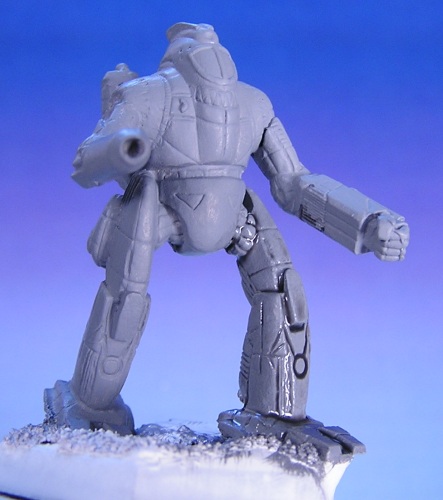
Looking at the final result, that came out heavier than a guide wash. However, it's just perfect for the look I need. Next, I start in with the blending. The first two coats are done with thinned-down Dark Sea Gray, which were applied to the left leg as shown below. This covers up any stray dark areas from the wash that were outside the panel lines.
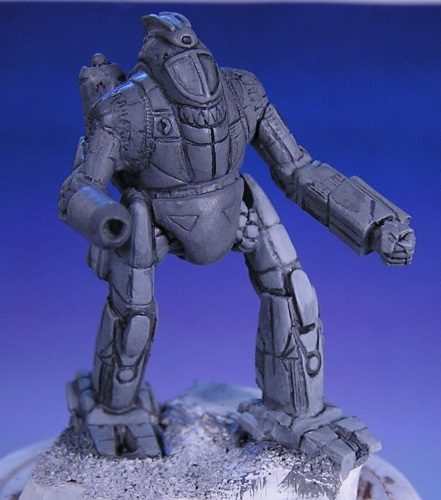
To get the blending done right, several thinned coats are required. After the first 2 coats, I used a thinned mix of half Dark Sea Gray and Ghost White (left) followed by a less-thin coat of the same. I followed that up with highlights of straight Ghost White (right).
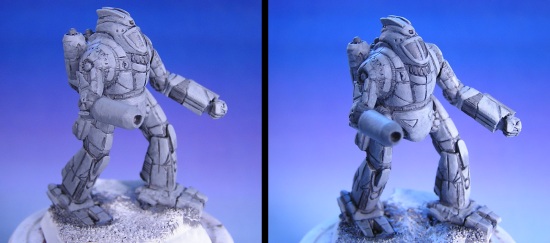
Page 1: Starting | Page 2: Assembly | Page 3: Painting | Page 4: Detailing | Page 5: Basing